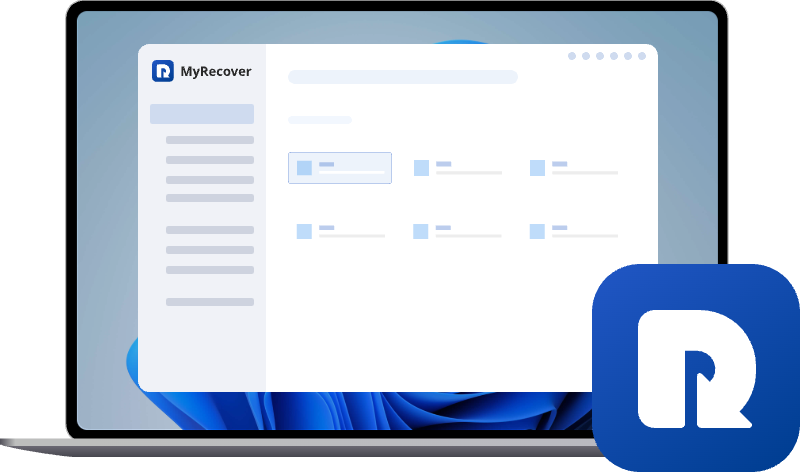Fix "USB Device Over Current Status Detected" - A Step-By-Step Guide
This guide explains the critical "usb device over current status detected" error, often seen on ASUS and American Megatrends screens. We detail what "over current has been detected on your usb device" means and provide step-by-step fixes to resolve this hardware safety warning and get your PC booting again.
USB Device Over Current Status Detected!
Stuck In POST with Error "USB Device Over Current Status Detected." I can't open my BIOS with any of the keys.
Getting an error stating USB Device Over Current Status Detected, but whenever I try to open the BIOS, I can't use any of the keys. This is not a keyboard issue, but an issue of the fact that I can't open my BIOS. I tried looking everywhere for help. I've tried removing and reinstalling the CR2032 battery on my motherboard, and it worked the first time, but I sadly plugged in another USB and started the same error. That method does not work anymore. I have an ASUS B560-Plus PRIME and have no idea what to do, as most of the methods are outdated and do not work in my case. Last ditch effort asking here, have no idea what to do.
- Question from learn.microsoft.com
Suffering from the error message “USB Device Over Current Status Detected, System will Shut Down After 15 Seconds”? The error message means a safety circuit has tripped because something connected to a USB port is trying to draw far more electrical current than it should, potentially threatening to damage your entire system.
Whether you're seeing an American Megatrends "USB device over current status detected" message or one from another BIOS manufacturer, the core problem is a serious hardware fault that needs immediate attention.
Don’t worry, this guide will not only walk you through the essential steps to troubleshoot this shutdown but also show you how to recover your precious files if the incident led to data loss.
Why Does the USB Device Show An Overcurrent Status?
Every USB port with a built-in circuit breaker. They're designed to deliver a specific, safe amount of power (typically 0.5 amps for USB 2.0 and 0.9-1.5A for USB 3.0). The moment the motherboard detects a power demand that exceeds this safe limit—a situation called an overcurrent—it slams on the brakes. It instantly cuts power to the entire USB controller to prevent damage from heat or a short circuit, which could fry the port or even the motherboard itself. This is the system's failsafe in action.
Why do you get this error message? Here are some reasons for that:
- Screws used to mount the motherboard are too tight
- Rogue mounting bolts attached to your case are touching the underside of your motherboard
- Some kind of conductive material is under or on your motherboard, causing short-circuits
- Wrong installation of front-panel cables
8 Fixes to USB Device Over Current Status Detected
When faced with this error, your goal is to quickly isolate the problem, and 90% of the time, the culprit is something external.
Way 1. Unplug All USB Devices and Peripherals
This is your absolute first and most important step.
1. Power down the computer completely.
2. Then, unplug every single thing connected to a USB port, like keyboards, mice, webcams, external hard drives, printers, phone chargers—everything. Don't forget any devices connected to the front-panel ports.
3. Once everything is disconnected, turn the computer back on. If the error disappears and the system boots normally, congratulations! You've confirmed the problem lies with a peripheral, not your computer's internal hardware.
4. The next step is to play a game of "plug and see". Plug each device back in one by one, restarting the computer each time, until you find the one that triggers the over current detected on USB device error again. That faulty device or its cable is your villain.
Way 2. Perform a Basic Power Cycle
If unplugging everything doesn't work, the next move is a full power cycle. This clears any residual electrical charge that might be stuck in the motherboard's memory, potentially causing a false alarm.
1. Shut down the PC and turn off the power supply using the switch on the back.
2. Then, unplug the power cord from the wall or the PSU.
3. Once it's completely disconnected, press and hold the PC's power button for 30-45 seconds. This will drain any remaining flea power from the capacitors on the motherboard.
4. Plug everything back in and try booting up again.
You'd be surprised how often this simple jolt of reality fixes a phantom ASUS USB device over current status detected error.
Way 3. Inspect USB Ports for Physical Damage
While you're down there, take a close look at every USB port on your computer, both front and back. Use a flashlight. What you're looking for is anything that seems out of place.
Are any of the plastic dividers inside the port bent, broken, or missing?
Do you see any dark burn marks or melted plastic?
Is there a pile of dust bunnies or a stray piece of metal (like a paperclip fragment) lodged inside?
A bent pin can easily touch another where it shouldn't, creating a direct short circuit that will instantly trigger the overcurrent protection.
The problem has likely moved inward if these solutions have failed and the error persists even with all external devices unplugged, and we need to start looking at the computer's internal configuration and components.
Way 4. Reset the CMOS or BIOS Settings
Sometimes, a corrupted BIOS setting can misreport hardware states. Resetting the CMOS (Complementary Metal-Oxide-Semiconductor) memory reverts the BIOS back to its factory default settings, which can clear these glitches. How you do this depends on your motherboard.
1. The safest method is to locate the circular CMOS battery on your motherboard, remove it.
2. Then press and hold the PC's power button for 30 seconds to discharge any remaining power.
3. Wait a few minutes, then reinsert the battery.
Some motherboards have a dedicated "CLR_CMOS" two-pin jumper that you can short with a metal screwdriver (with the power off and cord unplugged, of course). Consulting your motherboard's manual is the best bet here.
After resetting, the error may be cleared.
Way 5. Disconnect Internal Front-Panel USB Connections
We mentioned checking the header, but now we need to be more definitive.
1. With the power off, locate every single internal cable that connects to a USB header on your motherboard. This includes not just the standard USB 2.0/3.0 headers for the front panel but also any for internal card readers or fancy RGB controllers.
2. Unplug all of them. Every last one.
3. Now, try to boot with only the power cord and monitor connected. If the system boots successfully, you have confirmed that the short circuit is on one of those internal connections.
4. You can then plug them back in one by one, restarting each time, to pinpoint the exact faulty cable or device.
Way 6. Test Your Computer's Power Supply Unit
In rare cases, a failing Power Supply Unit (PSU) can be the phantom culprit. A PSU on its last legs can deliver unstable or dirty power, with voltage fluctuations that the motherboard's sensitive sensors might misinterpret as an overcurrent event on the USB bus.
If you have a spare, known-good PSU, swapping it in temporarily is the most direct test.
If you don't, and you're at your wits' end, this might be the point to consult a professional technician who has the proper equipment, like a PSU tester, to diagnose the issue safely.
Way 7. Remove Motherboard USB Protection IC
All you need to do is remove the motherboard USB protection IC, all of it. Then all USB ports are back online. But make sure if you can't do it by yourself self bring it to somewhere who can remove it, like a repair shop.
Way 8. Replace Your Motherboard
If nothing works, it might be that your motherboard has problems; you have to turn to a professional repair shop to fix it.
Recover Your Files After an Overcurrent Error
A "USB device over current status detected" error typically prevents your system from booting into Windows, leaving your files trapped on the internal drive. If you have critical documents, photos, or work on that drive, the inability to access them is a nightmare. After all of this, it might still not be working. How to get your files back? This is where a robust data recovery tool like MyRecover becomes your best friend. It's designed to work outside of the main operating system, allowing you to scan the drive and pull your files to safety.
Here is how to recover files from your computer that shows “USB device over current status detected” error with MyRecover:
1. On a separate, working computer, download MyRecover and install it. Connect another USB drive.
2. Tap PC Creashed Recovery, choose your USB drive, and hit Create to create a bootable media, which allows you to recover files from MyRecover.
3. With the bootable media created, plug it into the computer with the overcurrent error. Change the boot order to boot from your USB drive in BIOS/UEFI settings. Your computer should now boot from the MyRecover media instead of Windows.
4. Connect an external hard drive to your computer with the overcurrent error to save the recovered files. Tap Disk Data Recovery, then choose the drive, and hit Scan.
5. Wait for it to complete and hit OK.
6. Choose the files you need, and hit Recover. Choose the external hard drive to save the important files now.
- Tips:✎...
- You can also recover files from a formatted hard drive, unformatted partition, corrupted SD card, etc.
- To recover files from unlimited computers, upgrade to MyRecover Technician to enjoy.

- Recover Deleted Files Easily with Simple Clicks
- 1000+ File Formats Supported
- Support HDD, SSD, External Hard Drive, USB Drive, SD Card, etc.
- Quickly Find Files Using File Types, Name, Size, etc.
- Preview Files Before Recovering
- Recover Unlimited Data
FAQs
Q: I've unplugged everything and still get the error. What does this mean?
A: This means the short circuit is inside your computer case. The culprit is likely a misaligned front-panel USB connector, a faulty internal component like a card reader, or a physically damaged motherboard USB port. Your troubleshooting must now focus internally.
Q: Is this error message dangerous? Can it damage my computer?
A: The error itself is a protective warning—the system is shutting down to prevent damage. Ignoring it and forcing power could permanently destroy USB ports, damage the motherboard, or create a fire hazard. The message is a critical safety feature.
Q: Could a simple USB flash drive really cause this major system error?
A: Yes. A failed flash drive can internally short-circuit, trying to draw excessive power and triggering the protection. This is why unplugging all devices is the first troubleshooting step.
Q: I'm getting this error on a brand-new PC build. What did I do wrong?
A: This typically indicates an assembly issue. Check for a misaligned front-panel USB header, a misplaced motherboard standoff causing a short, or loose metal debris on the board. Meticulously inspect all internal connections.
Q: Is it possible for a software or Windows update to cause this?
A: Highly unlikely. This is a hardware-level error detected before Windows loads. While a corrupted BIOS can cause false readings, standard software/driver updates do not trigger this electrical fault.
Q: What is the worst-case scenario if I can't fix this?
A: The worst case is a failed motherboard component, like a shorted capacitor or voltage regulator. If all other fixes fail, the motherboard itself may be faulty and require replacement.


